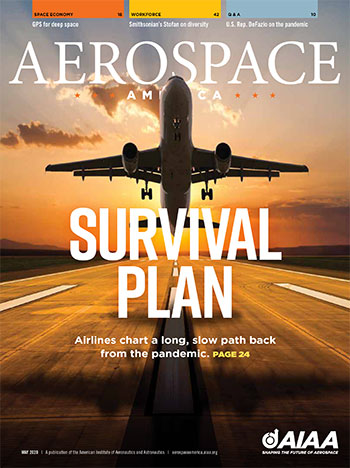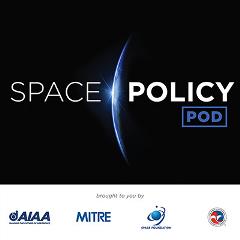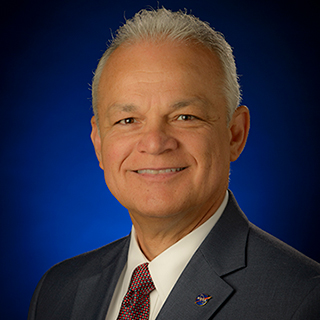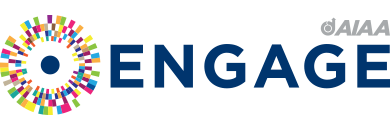Things to Do When You’re a Teleworking Aerospace Engineer or Aerospace Engineering Student
Many aerospace organizations are having their employees work from home to mitigate exposure to the coronavirus and keep communities, especially the most vulnerable members, safe and healthy. AIAA applauds and supports this decision.
We encourage everyone to follow the coronavirus safety guidelines set out by the WHO and CDC.
We understand you still have work to do and may be looking for new ways to connect while you telecommute. We can help.
For the latest updates about AIAA events and forums that have been impacted by the coronavirus pandemic visit: AIAA.org/coronavirus
If you’re a teleworking aerospace professional and have children at home, AIAA has some suggestions to keep your budding aerospace engineer busy.
Have time to update your research knowledge? Aerospace Research Central has more than 50 years’ worth of research papers.

Looking to start a conversation and hash out a technical topic? Go to Engage.
Recent topics include:
- The Potential of Space Tourism
- Looking for mentors for The American Rocketry Challenge
- Best Colleges for Aerospace
Engage community is a benefit of AIAA membership
Want to learn something new or brush up your skills? Sign up for online learning.
Looking to broaden your understanding of the latest issues in aerospace? Read Aerospace America.
Current Issue

The May 2020 issue of Aerospace America is now live. Don’t miss this month's cover story, "Action Plans," by Cat Hofacker. Also, see if you possess the knowledge to solve this month's AeroPuzzler: Surviving the Fall.
Webinars
-
 Space Policy Pod
Space Policy PodGiven the current real-world challenges confronting all of us, AIAA has joined the MITRE Corporation, Space Foundation, and the U.S. Chamber of Commerce to produce this podcast series to examine events and ideas affecting the space sector. We hope the episodes serve as an enlightening discussion on the relevant topics of the day with insights from key policymakers in the field.
All Episodes | Subscribe! Spotify | Apple Podcasts  Episode 10: Douglas Terrier
Episode 10: Douglas Terrier
9 September 2020
Chief Technologist, NASA
Episode recorded 29 July 2020
This podcast discussion features Dr. Douglas Terrier, NASA’s chief technologist. In this role, Terrier serves as the agency's principal advisor and advocate on technology policy and programs, helping plot the strategic direction of the agency's space technology program.
Prior to his current position, Terrier was the chief technologist of NASA’s Johnson Space Center. He also was the deputy director of NASA Johnson’s Strategic Opportunity and Partnership Development Office. Terrier worked in the commercial aerospace sector for a total of 23 years with Lockheed Martin, General Dynamics and General Electric Aircraft Engines.
Terrier earned a Ph.D. in aerospace engineering and a M.S. in Mechanical Engineering from the University of Texas.
Key Takeaways
The future of aerospace research and development
Terrier describes his long-term vision for the space industry and investment trends in aerospace research and development between government, private industry and academia. The agency is fostering and cultivating new relationships with private industry given the private sector’s unique position to bring in financial capital and a new way of doing business. Dr. Terrier also discusses how the agency has enabled commercial partners to innovate by shifting to a goal-oriented approach.
Interagency cooperation
Terrier discusses the great amount of interagency cooperation happening involving the Space Force, National Reconnaissance Office (NRO), the NASA Administrator, the Air Force, and others to identify how technology developments at NASA can meet national security needs for other departments. Terrier also discusses the progress made to coordinate On-orbit Servicing Assembly & Manufacturing (OSAM) strategy across the whole of government.
Economic impacts of technology development
NASA technologies significantly benefit the economy and other industries. These returns include technology transfer programs, remote-sensing applications in agriculture, hurricane management, search and rescue, and resource management.
Investments in emerging and matured technologies
Terrier discusses the role of his office in setting policy and performing strategic technology assessments with enabling, enhancing and transforming technologies for space exploration missions. Terrier also explains the coordination across NASA’s mission directorates to integrate and infuse earlier technologies to enhance missions.
Challenges of emerging technologies
Terrier emphasizes some key issues with artificial intelligence and machine learning playing an increasingly large role in space operations such as automation in launch and flight safety systems. Operating in a shared environment with other nations creates opportunities for disrupting communications, which the agency is working to prevent.
Podcasts
-
 Space Policy Pod
Space Policy PodGiven the current real-world challenges confronting all of us, AIAA has joined the MITRE Corporation, Space Foundation, and the U.S. Chamber of Commerce to produce this podcast series to examine events and ideas affecting the space sector. We hope the episodes serve as an enlightening discussion on the relevant topics of the day with insights from key policymakers in the field.
All Episodes | Subscribe! Spotify | Apple Podcasts  Episode 10: Douglas Terrier
Episode 10: Douglas Terrier
9 September 2020
Chief Technologist, NASA
Episode recorded 29 July 2020
This podcast discussion features Dr. Douglas Terrier, NASA’s chief technologist. In this role, Terrier serves as the agency's principal advisor and advocate on technology policy and programs, helping plot the strategic direction of the agency's space technology program.
Prior to his current position, Terrier was the chief technologist of NASA’s Johnson Space Center. He also was the deputy director of NASA Johnson’s Strategic Opportunity and Partnership Development Office. Terrier worked in the commercial aerospace sector for a total of 23 years with Lockheed Martin, General Dynamics and General Electric Aircraft Engines.
Terrier earned a Ph.D. in aerospace engineering and a M.S. in Mechanical Engineering from the University of Texas.
Key Takeaways
The future of aerospace research and development
Terrier describes his long-term vision for the space industry and investment trends in aerospace research and development between government, private industry and academia. The agency is fostering and cultivating new relationships with private industry given the private sector’s unique position to bring in financial capital and a new way of doing business. Dr. Terrier also discusses how the agency has enabled commercial partners to innovate by shifting to a goal-oriented approach.
Interagency cooperation
Terrier discusses the great amount of interagency cooperation happening involving the Space Force, National Reconnaissance Office (NRO), the NASA Administrator, the Air Force, and others to identify how technology developments at NASA can meet national security needs for other departments. Terrier also discusses the progress made to coordinate On-orbit Servicing Assembly & Manufacturing (OSAM) strategy across the whole of government.
Economic impacts of technology development
NASA technologies significantly benefit the economy and other industries. These returns include technology transfer programs, remote-sensing applications in agriculture, hurricane management, search and rescue, and resource management.
Investments in emerging and matured technologies
Terrier discusses the role of his office in setting policy and performing strategic technology assessments with enabling, enhancing and transforming technologies for space exploration missions. Terrier also explains the coordination across NASA’s mission directorates to integrate and infuse earlier technologies to enhance missions.
Challenges of emerging technologies
Terrier emphasizes some key issues with artificial intelligence and machine learning playing an increasingly large role in space operations such as automation in launch and flight safety systems. Operating in a shared environment with other nations creates opportunities for disrupting communications, which the agency is working to prevent.
Advocacy
Learn more about aerospace advocacy and reach out to policy makers.
AIAA delivers extensive technical expertise and policy guidance to decision makers at the federal and state levels, serving as a reliable resource on a full spectrum of aerospace issues such as satellite launch systems and technology, commercial space activities, airport infrastructure modernization, hypersonic vehicle technologies, aircraft manufacturing, and cybersecurity threats.


